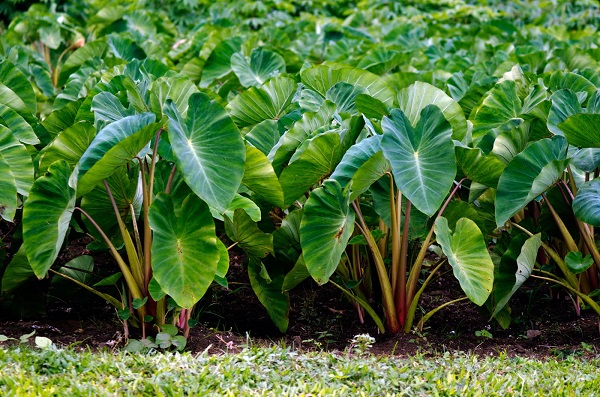
Taro root (Colocasia esculenta) is a starchy, nutritious, and versatile tuber that has been a staple food in many tropical regions for centuries. With its distinct flavor and the ability to thrive in both wet and dry conditions, it has gained popularity among home gardeners and greenhouse enthusiasts alike. In this article, we will explore the steps to successfully grow taro root in both a garden setting and in a container within a greenhouse.
Growing Taro Root in a Garden
Climate and Soil Requirements
Taro plants thrive in warm, tropical to subtropical climates. They prefer loose, well-draining soil with plenty of organic matter. If your area experiences colder temperatures, consider growing taro in the spring and summer months when the weather is warmer.
Planting Time
In regions with a year-round warm climate, taro can be planted at any time. However, in cooler areas, it’s best to plant taro when the soil temperature reaches at least 65°F. Late spring or early summer is often the ideal time to start planting.
Selecting Taro Rhizomes
Obtain healthy and disease-free taro rhizomes from a reputable nursery or garden center. Look for firm and plump rhizomes with no signs of rot or damage.
Planting
Incorporate organic compost into the soil before planting to enhance fertility. Plant the taro rhizomes horizontally, about 2 to 4 inches deep, with the bud side facing up. Space the rhizomes at least 12 to 18 inches apart to allow for their large leafy growth.
Watering
Taro plants require consistent moisture, so keep the soil consistently damp but not waterlogged. Mulching around the plants can help retain soil moisture and suppress weeds.
Fertilization
Fertilize the taro plants with a balanced organic fertilizer once a month during the growing season to promote healthy growth and tuber development.
Pest and Disease Management
Keep an eye out for pests such as aphids and slugs, as well as diseases like leaf blight. Implement natural pest control methods and remove affected leaves promptly to prevent the spread of diseases.
Growing Taro Root in a Container within a Greenhouse
Container Selection
Choose a large container (at least 15 gallons) with good drainage holes to ensure excess water can escape. Taro plants have a substantial root system, so providing enough space is essential for healthy growth.
Potting Mix
Create a well-draining potting mix by combining equal parts of compost, peat moss, and perlite. This mix will provide the necessary nutrients and aeration for the taro plant.
Planting
Plant one taro rhizome per container, placing it horizontally with the bud side facing up. Ensure that the top of the rhizome is just below the surface of the potting mix.
Greenhouse Environment
Taro plants prefer warm and humid conditions. Maintain a temperature of around 75°F to 85°F in the greenhouse. Increase humidity by misting the leaves regularly or using a humidifier.
Light
Provide ample light for your taro plant by placing the container in a spot that receives partial shade to filtered sunlight. Direct exposure to intense sunlight may scorch the leaves.
Watering and Fertilization
Keep the potting mix consistently moist but avoid overwatering as this can lead to root rot. Apply a diluted, balanced liquid fertilizer every two weeks during the growing season.
Transplanting
As the taro plant grows, it may outgrow its container. If this happens, carefully transplant it into a larger container to ensure continued healthy growth.
Conclusion
Growing taro root can be a rewarding experience for both gardeners and greenhouse enthusiasts. Whether in a sunny garden bed or a controlled environment within a greenhouse, taro plants can produce abundant and delicious tubers with the right care. By providing the appropriate climate, soil conditions, and proper care, you can enjoy a bountiful harvest of this nutrient-rich and versatile tropical tuber.
Related Articles & Free Email Newsletter Sign Up
Grow Your Own Pepper with a Peppercorn Plant



Comment here